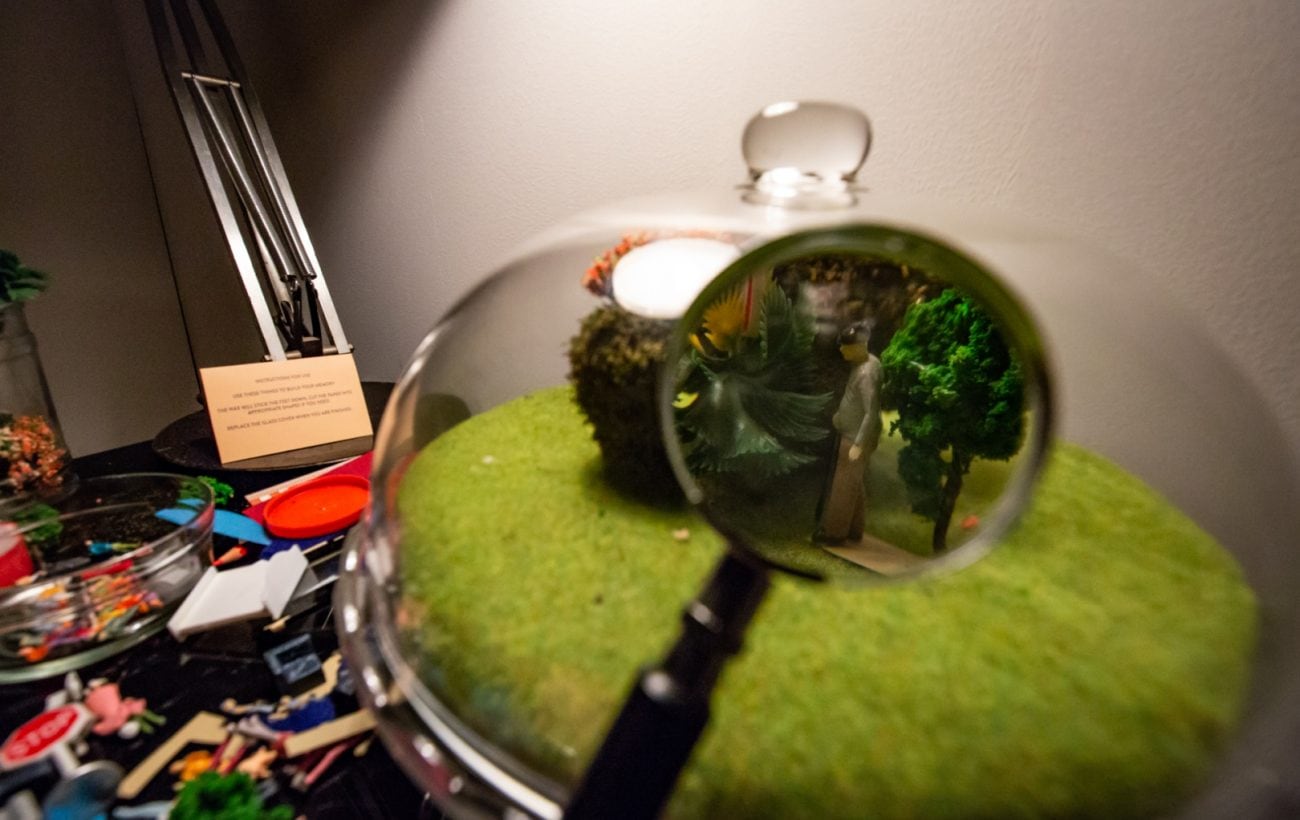One of the most fascinating experiences I have ever made in VR, The Collider is neither a VR film, nor a VR game, or a play, or VR meditation… Calling it an installation or even self-experience feels closer to home. The idea behind it appears equally simple as it is genius: in The Collider, two people crash into each other.
The Collider Stops Off in New York
New York City in April of 2019, it’s the first day of the Tribeca Film Festival. I find myself standing in front of the Virtual Arcade, eagerly waiting for the grim doorman to let me pass.
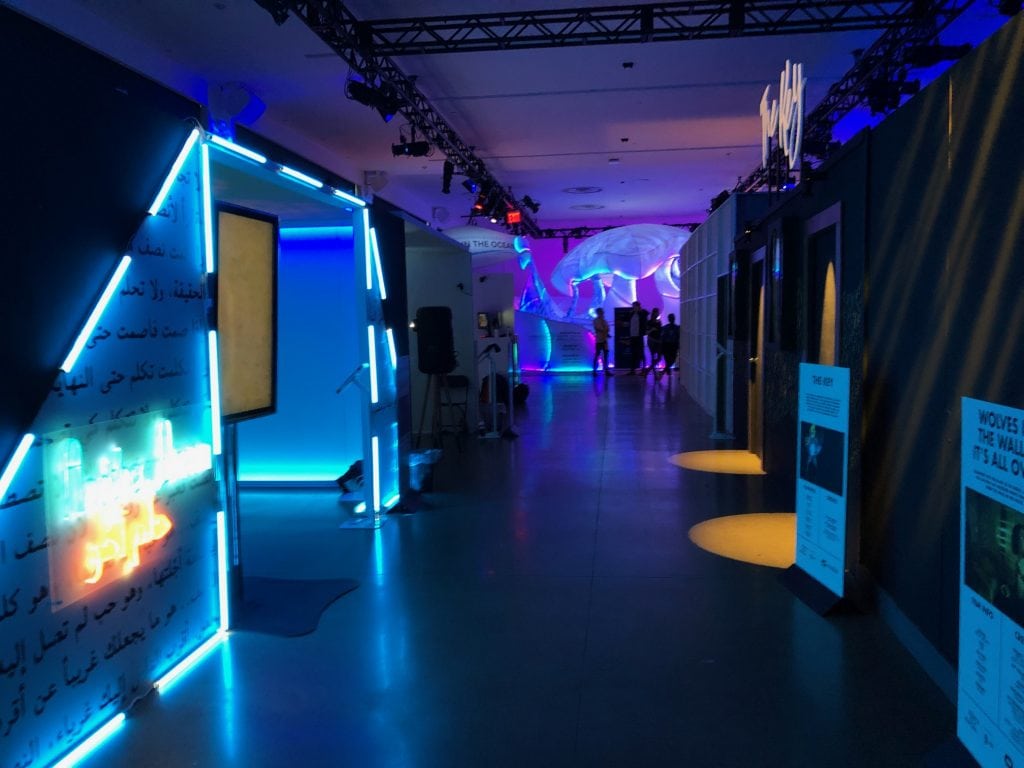
Through the open door, I can see May Abdalla waving at me from the dark exhibition space. Together with her colleague and co-director Amy Rose, she founded Anagram, a creative studio specialized in immersive and interactive experiences and based in Bristol, England.
In 2018, I already had the chance to see May’s VR project Make Noise at the Venice Film Festival, an examination of the Suffragette movement which Anagram produced for the BBC (available free of charge for the Oculus Go).
Barely having entered the room, May pulls me aside, pointing at a large box behind her. The Collider has its spot right at the entrance and is one of the few installations featured that year. Running up to 40 minutes long, it is also one of the lengthiest experiences. But what’s it all about?
An Experiment of Power and Powerlessness
The name of the experience did not come about randomly: it alludes to the Large Hadron Collider, the particle accelerator housed in the CERN research facility close to Geneva. This namesake, however, does not let see particles collide — but people. In my case, May plays the procuress. “Wait here,” she tells me and disappears for a moment only to return with a unknown woman in tow.
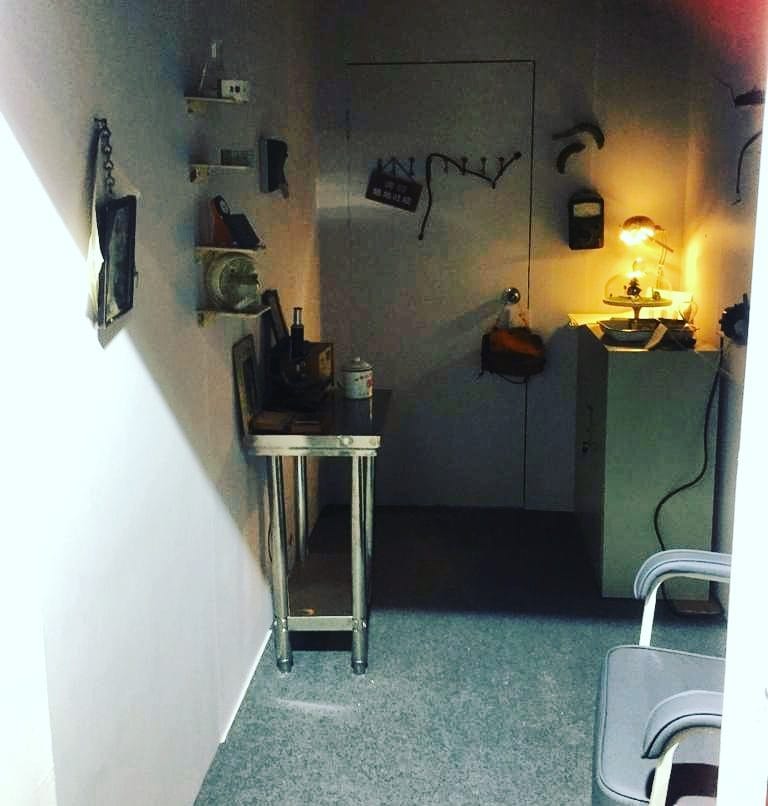
The stranger and I enter the VR experience through separate entrances. I find myself in a small room reminiscent of a doctor’s office. I promptly put on the pair of headphones that were hanging off the wall, only to hear a woman’s voice giving me instructions.
On a dresser in front of me, I find a glass bowl containing miniature figurines sitting on dollhouse furniture and surrounded by tiny trees. Then, I am to craft, the voice tells me. Using the figurines, colored paper and a pair of scissors, I should reconstruct a situation from my past in which I found myself in a position of relative weakness: the powerless confronted with the powerful.
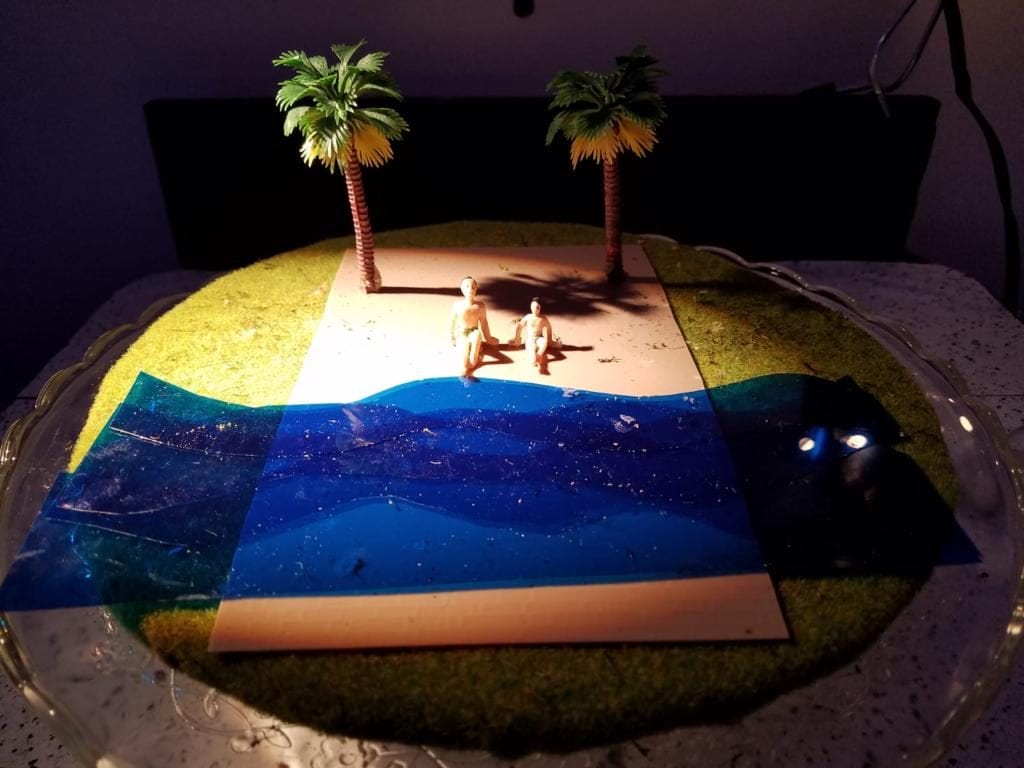
Psychologists would refer to this first room’s purpose as “priming:” awakening my memories to set my emotional state and accompanying reactions to any subsequent events… This was certainly not the last thing that would made me think of a scientific experiment.
Dancing With a Stranger
I pass through a door to enter a second room as the voice commands me to. The walls here are simply made of green curtains, and a heap of sand is piled in the middle. Hanging above: a pair of VR goggles, which I pull over my head. With my feet in the sand and the goggles covering my eyes, I see – nothing.
Once again, the voice starts, talking of particles, of relationships and of hierarchies… I’m not really listening – I’m consumed with the darkness within the goggles and two glowing clouds approaching me.
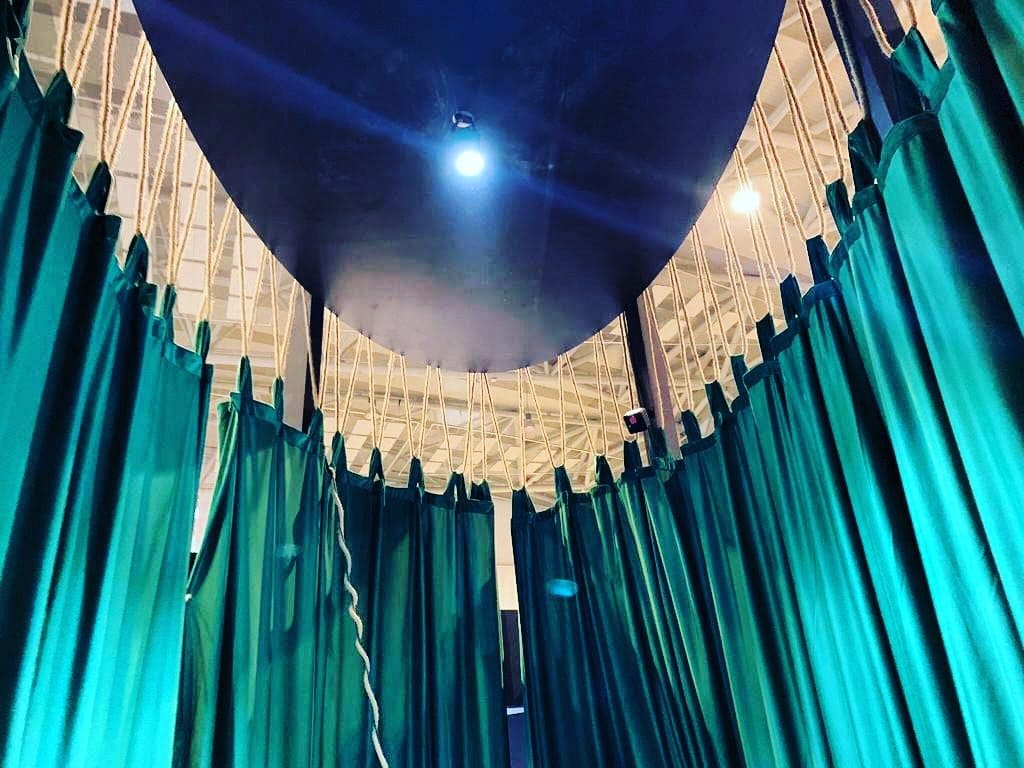
The clouds begin to move in circles. I should do the same, the voice insists. And so, my hands follow the clouds – we’re spinning, faster and faster, more and more extravagantly, and it becomes increasingly difficult to trace the movements with my arms.
The two clouds are the hands of the stranger who ventured into The Collider with me. She’s holding the controllers, I’m wearing the VR goggles. She knows that I’m blind to my surroundings.
The Uneasiness
I find myself hoping nobody can see my discomfort. I’m feeling nervous, the room is warm and suddenly I feel a hot pang of embarrassment with the realization that she could see me sweat. How demeaning that would be!
Now, I get to lead our little dance by swaying my hands back and forth, turning round and round, squatting down, jumping up. The clouds follow my movements. There is a brief moment in which we’re perfectly aligned, which feels oddly beautiful. And yet, I don’t want to make it too easy for her, now that I can finally lead this hybrid dance.
Now I am commanded to use my voice and shout – I feel anxious that the stranger can hear me. I find myself feeling more and more insecure and actually start sweating, which only makes the situation more uncomfortable. Why is this taking so long?
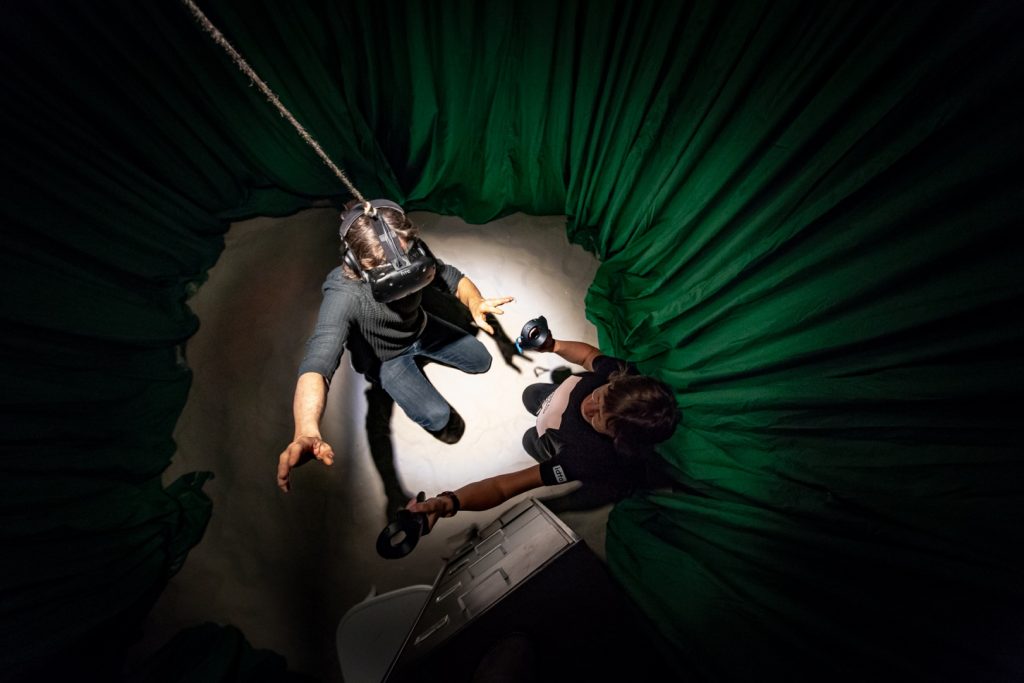
Then, suddenly, I feel two hands on my shoulders. Gently, they lead me back a few steps and push me down. Oh yes, there’s a chair, I remember, and, relieved, I take a seat.
I sense the other person move away briefly. All of a sudden, there’s a draft hitting my skin. Wind? Someone is fanning me. I’m sitting there, appreciating the coolness and waiting for what may come next… Just why do I trust her this much?
The Collider Sparks Contemplation
Following this experience, we’re led into the third and last room. There, the stranger and I finally sit face-to-face. Spread out on the table between us are little “menu” cards with questions intended to fuel a discussion – we don’t need them, however, and immediately start sharing our experiences.
It’s a lively discussion, yet I sense a disconcerting detail: the hierarchy created by the experience seems to persist throughout the first couple of minutes of our conversation. It’s the stranger who speaks first; she asks the questions. Initially, I feel a bit defeated and am relieved to find this impression dissipating.
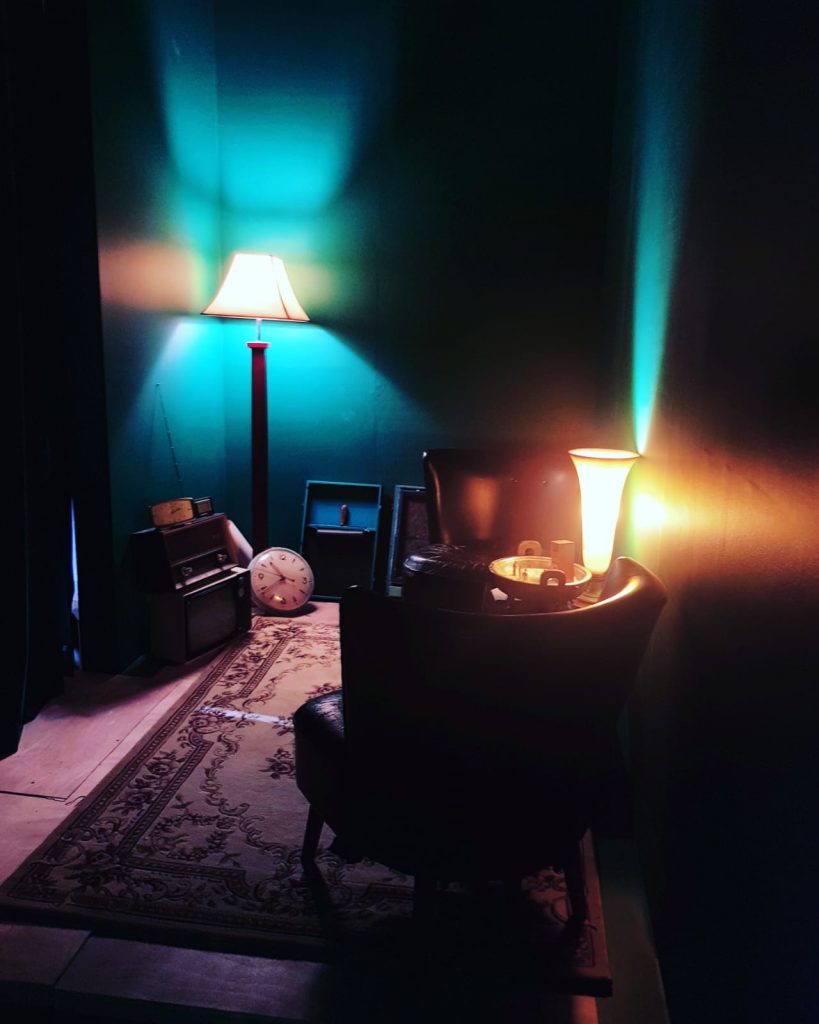
The stranger, who no longer is a stranger to me, but rather feels astonishingly familiar, reported on her side of the story, too. While I felt vulnerable and observed, she felt the burden of responsibility. She wanted to protect me.
In Conversation With May Abdalla: the Secret of Human Relationships
I can’t really say that I liked the experiment. But I don’t regret for one second what I dared to stray into, because it taught me a lot about myself. Afterwards, I had the opportunity to discuss this with May. What were they seeking to discover with The Collider? May explains:
“The idea is that The Collider is a machine. It fires individual humans at one another in order to try to discover the material that exists between us. What creates the bonds between humans? Why do they sometimes seem so strong? Why do they sometimes seem so brittle? What is this indecipherable scientific quality of why we connect, why we dominate and why we submit?”
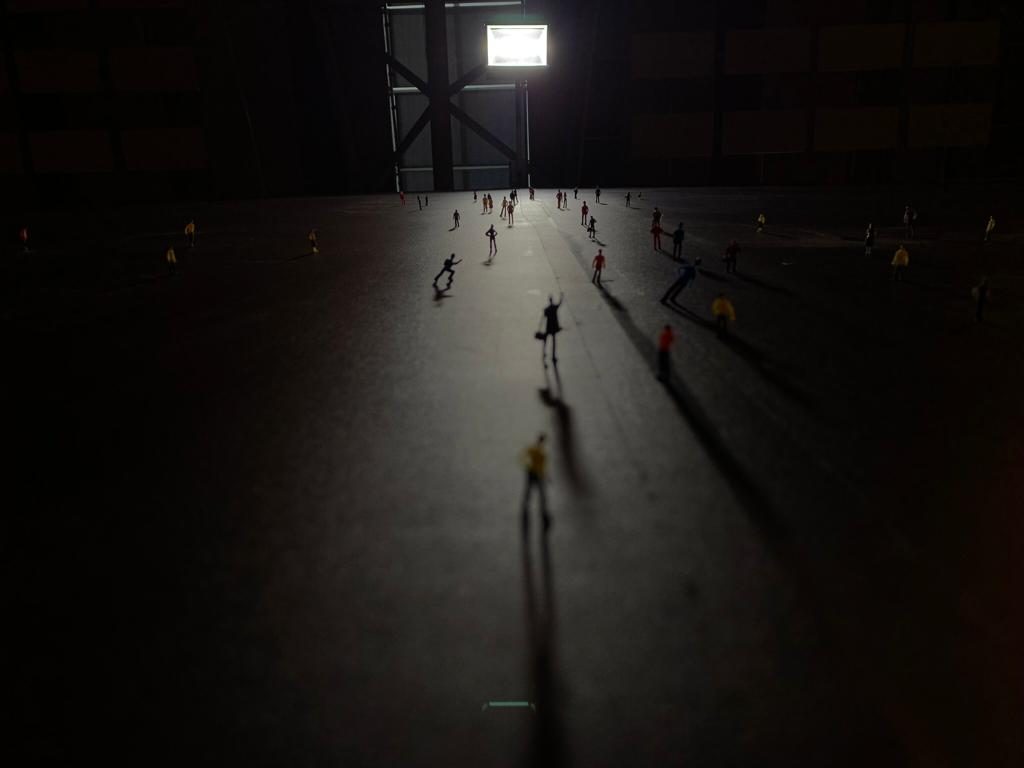
Of course, it makes a difference whether the two people entering The Collider are complete strangers or they’re familiar with each other — they might even have known one another for a long time. When people know each other, things might take a very different course, May posits, and laughs. I inquire to what extent women and men react differently to the experiment.
May explains that when a couple comes to her, she likes to give the man the exposed role (in the VR goggles) and the woman the dominant one (with the controllers). There was, however, a situation in which the woman insisted on wearing the VR goggles.
“That was really interesting for both of them. The man later spoke to us about how he became aware that he should really, really not overstep the mark. It reminded him of a lot of moments in his relationships with women. So perhaps there was something useful in that. But obviously we can’t predict this. It’s the most interactive thing that we could possibly make, because we hand it over to the participants. It’s a series of possibilities. What they bring to it is in their minds, what they do to it is their decision.”
The most interesting debates surrounding #MeToo came about when people started asking how abuse of power even came to be, May continues. People would wonder how such things would even happen. Are we not actually complicit in letting the other do these things to us? A very controversial subject, May concludes, because of course, victims should never be to blame.
The Collider places questions of power and dominance into a broader context, instead. We have internalized so many social and cultural norms that it makes sense to also turn inward and reflect upon ourselves, according to May:
“It’s about trying to understand that in this bigger language about power – and it’s a huge universe of arguments – there’s this totally other tiny, internal, particle by particle, piece by piece universe of power which is actually in your mind. And if you managed to unpick a single part of that, then this entire monolith of hierarchy and how the universe runs and how governments run and who makes decisions is completely connected to that.”
You’ll have to find out for yourselves whether the VR experience achieves this goal. I would say: take the plunge if you get the chance!
The Collider is Coming to Venice
Amy and May both have backgrounds in documentary filmmaking, which shines through in their work. It only fit too well that a short version of The Collider premiered at IDFA’s 2018 Doclab in Amsterdam, the largest documentary film festival in the world.
Succeeding their shows in New York and China (where they even won the “Best Immersive Art Award” at the Sandbox Immersive Festival), they will be coming to the International Venice Film Festival next. At the end of August, The Collider will be shown to the Venetian audience as one of ten experiences in the category “Best of VR.”
Translated by Jan Mc Greal
